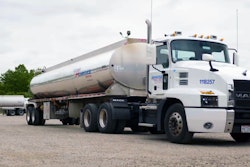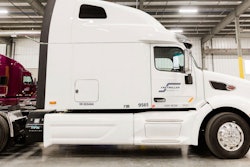There is a fair amount of skepticism on the part of fleets when it comes to fuel economy testing. The reality is fleets don't believe the results of fuel economy testing due to the history of certain test results that never played out in the real world.
Fleets want to know that the test results are reliable and transferable to their actual operations. There are a variety of ways that the fuel economy of a device is tested including in-service fleet testing, SAE J1321 tests (also known as Type 2 tests), wind tunnel tests, computational fluid dynamics (CFD) tests, coast-down tests and MVT Solutions proprietary tests.
Each test type has it pros and cons and fleets need to understand the limitations of each test when evaluating the data. Ask questions about how the test was conducted, whether real vehicles were involved, what was measured, how it was measured, whether the test results are repeatable and how those test results will translate into the fleet’s saving in real-world operations. If the company performing the test cannot provide a reliable value, that is a red flag.
For test data to really be meaningful to the fleet it needs to be analyzed based on the fleet’s unique operating variables. No two fleets operate in the exact same way. A fuel saving device that yields significant fuel savings in one fleet may not be appropriate for another fleet that is operating in a different geographic location, or one that has slightly different duty cycles.
The analysis of the test data should help fleets determine what their real-world fuel savings will be. That is really the only number that should matter to a fleet manager. Fuel economy gains seen in a test need to be repeatability on the road day in and day out.
I believe the most accurate test results are those that are conducted on actual vehicles rather than in wind tunnels or via computer simulation.
The best fuel economy test is one that uses sensors to acquire data and relies on algorithms to extrapolate the test data and translate it into actual fleet-wide savings. Other test methods have their strengths. Wind tunnel tests are easy to run as are CFD tests. The J1321 test is fairly straightforward. However, if these tests cannot provide real-world answers then the fleet’s objective hasn't not been met.
Fleets operate in the real world; their fuel economy savings need to be real too.
Daryl Bear is the COO and Lead Engineer of Mesilla Valley Transportation Solutions (MVTS), a subsidiary of the MVT fleet. He is a mechanical engineer with 20+ years’ experience. Bear developed a proprietary test method for quantifying fuel savings in trucking and has conducted nearly 700 fuel economy tests to date on Class-8 vehicles, building on experiences from his previous roles as a race car engineer and test engineer. He has worked with IndyCar, NASCAR, and with automotive OEMs on automotive testing.













